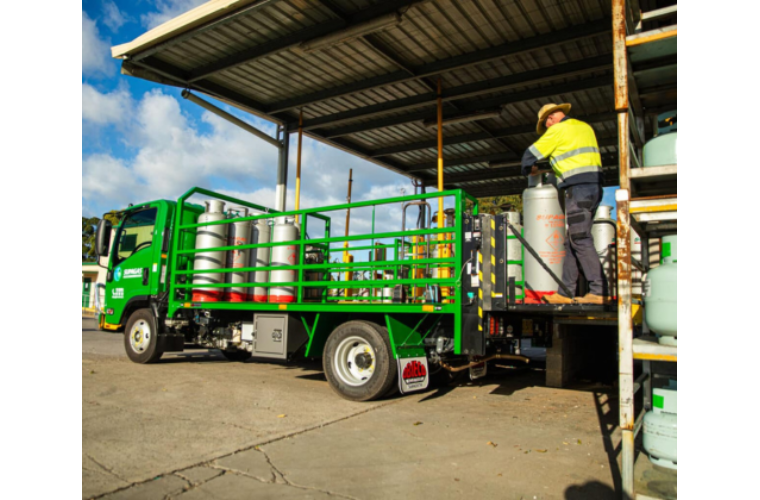Winter warmth in a bottle: Why 45kg cylinders are a cold-season essential
This article was originally published on Energy Today.
Sarah Smith, national residential manager – LPG for Supagas, explains how the humble 45kg LPG cylinder has become a winter must-have for Australian households and businesses – offering security, affordability, and a reassuring backup when the power goes out.
When the temperature drops and the heaters switch on, Australians start thinking about energy – and more specifically, how to stay warm without straining their budgets or facing the unpleasant surprise of bill shock. According to Supagas’ Sarah Smith, there’s a clear frontrunner for cold-season dependability: the 45kg LPG cylinder.
“It’s incredibly convenient,” Smith said. “It can power multiple appliances – heaters, ovens, stoves, and hot water systems. And in areas where there’s no natural gas – or where new natural gas connections aren’t allowed – it’s often the only real option. What many people don’t realise is they can still have LPG installed even if they can’t get piped natural gas.”
It’s not just the off-grid crowd taking notice. From regional homes to city granny flats, from Airbnb rentals to food trucks, 45kg cylinders are quietly powering a broader shift in how Australians live, cook, and heat their spaces.
The many faces of the 45kg customer
According to GEA, roughly two million customers use LPG for cooking, heating, and hot water. And according to Smith, that customer base is diversifying.
“Tiny homes have been a real growth area,” Smith said. “They’re often in quite remote spots where running a gas line just isn’t feasible. A pair of 45kg cylinders gives residents reliable heating and hot water with minimal fuss.”
Similarly, she points to the return of food trucks – post-COVID – as a fast-growing customer base. “They need something mobile, practical, and safe. The 45kg is a really good fit.”
And for households grappling with rising living costs, LPG’s budget transparency is part of its appeal.
“You know exactly what you’re paying,” she said. “There’s a set cost per bottle, and if there’s a rental fee, it’s annual – so it’s easy to manage. We even provide guides to help new customers estimate their usage based on appliances and household size.”
Why choose gas when you have electricity?
With rooftop solar now common in Australia, why are households still choosing gas?
“Electricity doesn’t always cut it in winter,” Smith said. “Especially at night, when solar doesn’t help unless you’ve got batteries – which most people don’t. LPG gives you a consistent, powerful heat source. And in areas where blackouts are common, it’s just more reliable.”
Unlike reverse-cycle air conditioners, which can struggle to maintain warmth in large or draughty spaces, gas heaters powered by 45kg bottles deliver steady, room-filling warmth.
And with portable models, Smith notes, customers can heat just the rooms they’re using – instead of wasting energy warming an entire house.
No one wants a cold shower
One of the most pressing winter fears for LPG users? Running out.
“We encourage all customers to have two bottles,” Smith said. “That way, if one runs out, you’ve got a backup ready to go – especially important for heating or hot water in the middle of winter.”
Supagas supports this with proactive communication. “We send SMS reminders, EDMs, and social media posts urging people to check their bottles as the weather cools. It’s easy to forget if you haven’t used your heater since last September.”
While larger bulk cylinders used by businesses can be fitted with telemetry to monitor gas levels remotely, 45kg bottles are exchange-based – meaning customer vigilance is key.
That said, ordering is now easier than ever. “Customers can place orders online, through our portal, or by email – it doesn’t have to be during office hours. We know a lot of people are working shifts or have busy lives.”
A company culture that delivers – literally
Supagas is known for its “Yes We Can” ethos – a mantra that translates into action when customers are caught short.
“We’ve had customers call in a panic during a cold snap,” Smith said. “We do everything we can to get gas to them as quickly as possible. For us, that’s just normal service. But we often get feedback saying it felt like above-and-beyond.”
One memorable example? A major film production in Wollongong, New South Wales, needing hundreds of cylinders on short notice.
“They called asking for 200-plus 45kg bottles for a special effects scene,” Smith recalled. “The local branch didn’t have that stock – but we coordinated with Sydney, re-valved cylinders, and got them delivered on time. It’s that sort of flexibility that makes a difference.”
Safe, reliable, and professionally installed
Every LPG setup must comply with Australian standards. A licensed gasfitter must handle installation, and Supagas drivers – trained extensively – only exchange bottles where the site is compliant.
“We go through a full safety checklist with every new customer,” Smith said. “We ask for photos if there’s anything unusual about the access – steep steps, tight paths. Drivers can’t be lifting cylinders or navigating unsafe areas.”
Every time a cylinder is swapped, the driver checks for leaks and ensures all connections are secure. If the driver identifies a gas leak, cylinders are turned off, and the customer is advised to contact their gasfitter.
“We’re thinking about safety at every point – not just for our drivers, but for the customer and their family.”
A reliable winter partner
In a season where reliability matters most – when the power fails, the hot water’s cold, and the heater’s working overtime – the 45kg LPG cylinder is quietly holding the line. And Supagas, with its responsive service and safety-first approach, is making sure no one’s left in the cold.
“Gas is gas is gas,” Smith said. “But service? That’s where we stand apart.”


 Instagram
Instagram